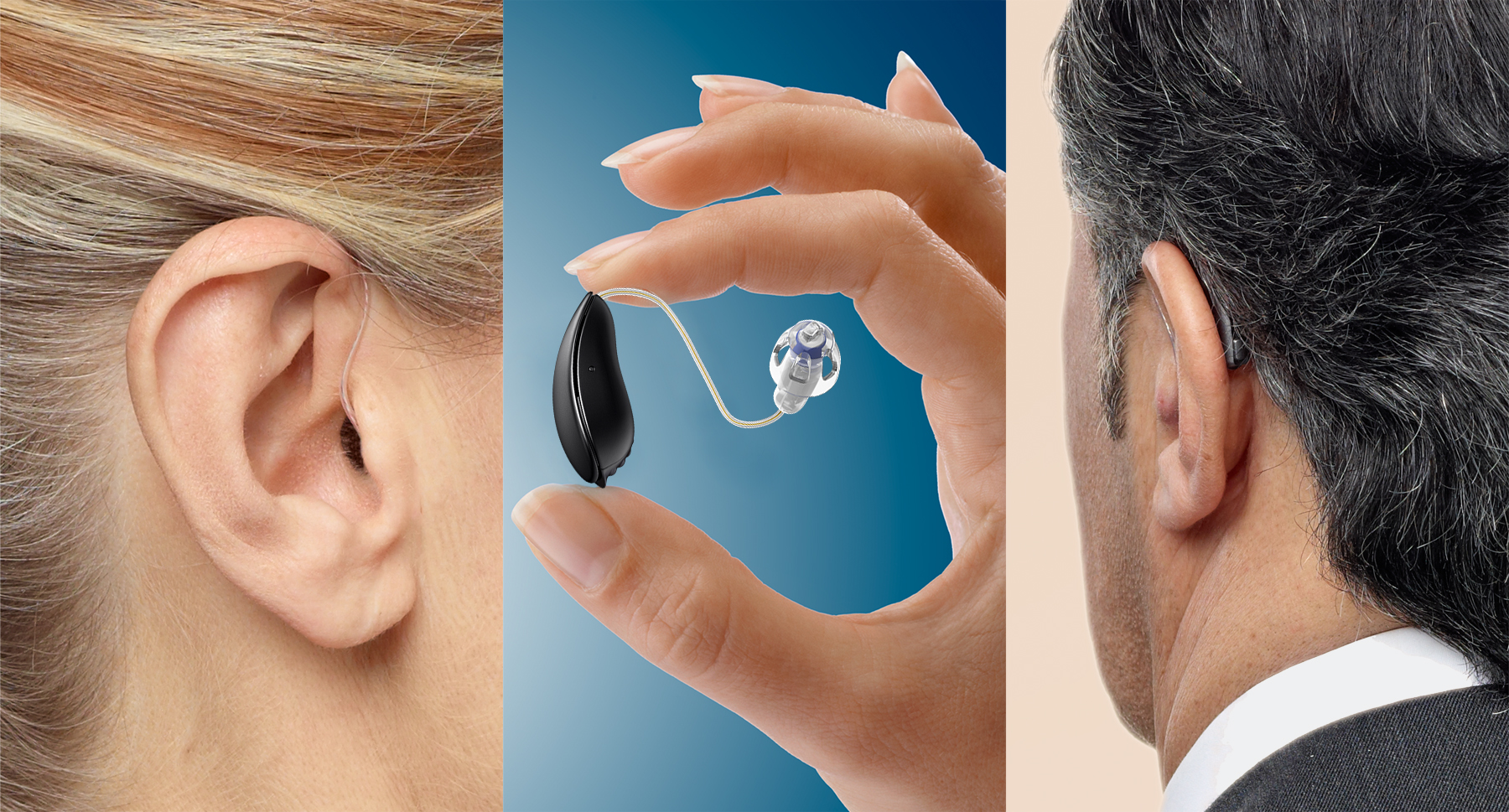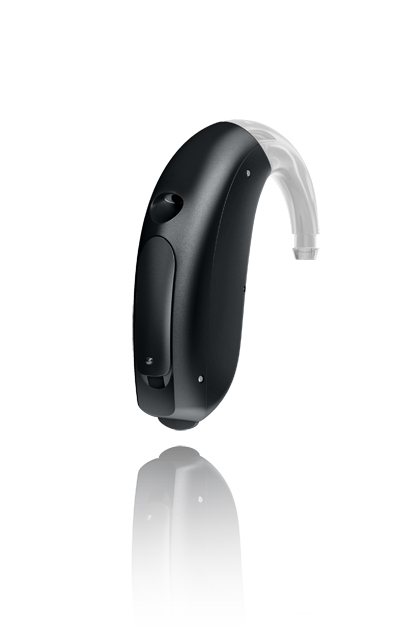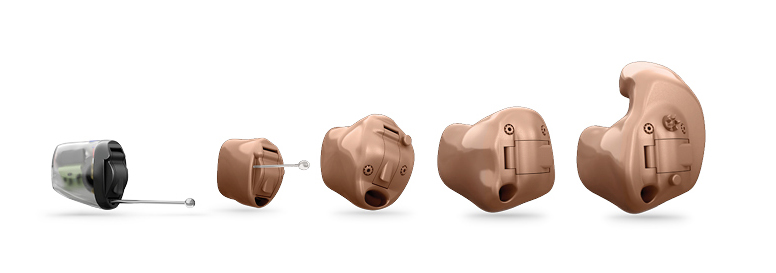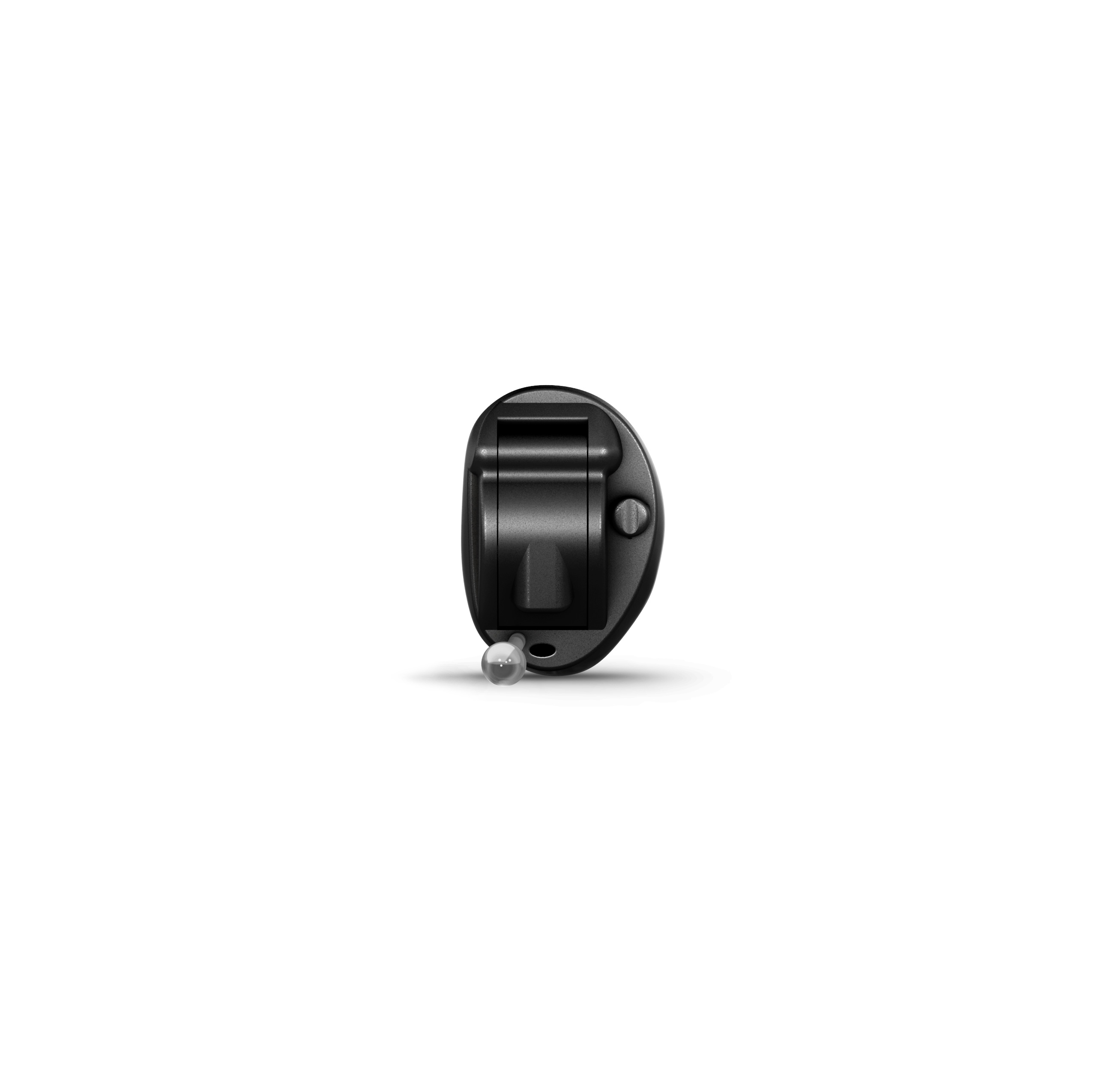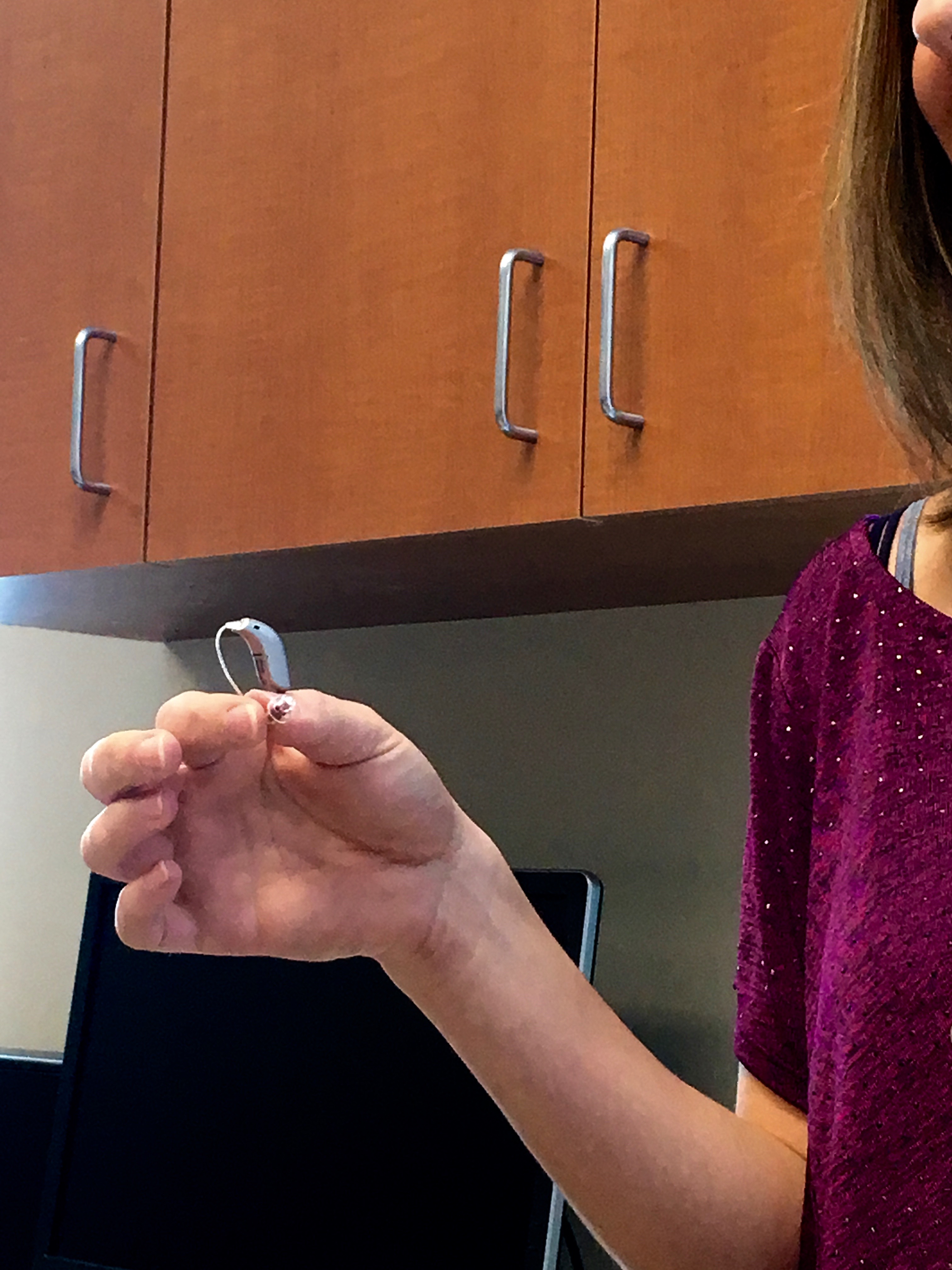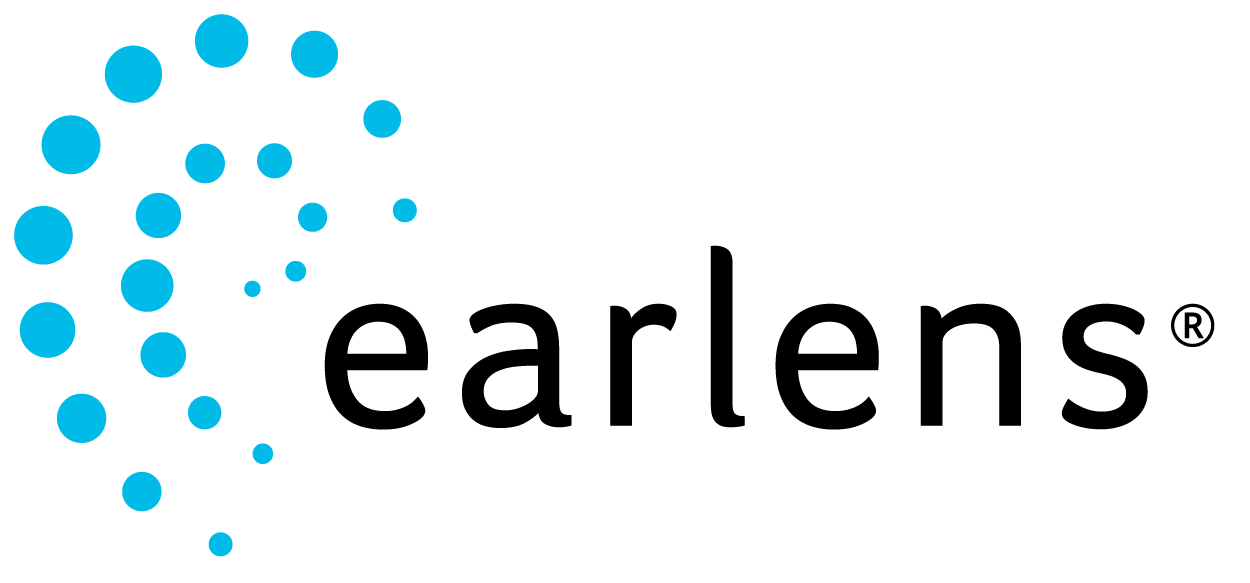Hearing Devices & Earlens
Styles
There are three basic styles of hearing aids. The styles differ by size, their placement on or inside the ear, and the degree to which they amplify sound. Determining which style is best for the individual depends on both the severity of the hearing loss and the patient’s lifestyle.
Conventional Hearing Devices
There are three basic styles of conventional hearing aids that vary in size, placement and degree of amplification. Determining which style is best for the individual depends on the severity of the hearing loss.
Behind The Ear (BTE)
These hearing aids are worn behind the ear and connected to a plastic mold that is placed inside the outer ear. They are utilized by individuals with mild to profound hearing loss. New technology has introduced a smaller BTE aid consisting of only a small tube placed into the ear canal. This has the advantages of keeping the canal open and protecting the device from damage due to wax buildup. This smaller BTE also provides a clearer sound.
In The Ear (ITE)
These hearing aids are smaller devices that fit inside the outer ear. They can be used for mild to severe hearing loss but are not typically used for children since they will be quickly outgrown.
Receiver In The Ear (RITE or miniRITE)
Canal
Canal aids are the smallest type of aid and fit either in the canal, ITC, or completely in the canal, CIC. Because canal aids are so small, they may be hard to adjust and have very limited space for batteries and other devices. Canal aids, therefore, are most frequently recommended for individuals with mild to moderate hearing loss.
We also provide hearing accessories such as remotes and streamers, including wireless technology.
Cochlear Nucleus Cochlear Implant
Cochlear Osia System
Cochlear Baja System
An AuD is holding a popular style hearing aid,called a miniRITE, during an info session for the staff
Individuals considering the purchase of hearing aids should consult with their Otolaryngologist Dr. Conley, Dr. Boole or Dr. Tuper along with the Audiologist either Dr. Zornes or Dr. Harmon, to make the most sensible choice. Since hearing aids are a costly investment, most manufacturers allow a trial period after purchase to make sure the devices are beneficial for the particular patient. Hearing aids are often a very worthwhile investment for many individuals, resulting in improved hearing and the ability to communicate and socialize.
Insurance Coverage and Hearing Aids
Some Insurance Companies have hearing aid coverage. We will call and verify your individual coverage before your appointment date so there are no suprises.
EARLENS
Please click on the Video links below:
Earlens Mechanism of Action video
Earlens sound Comparison_Video


